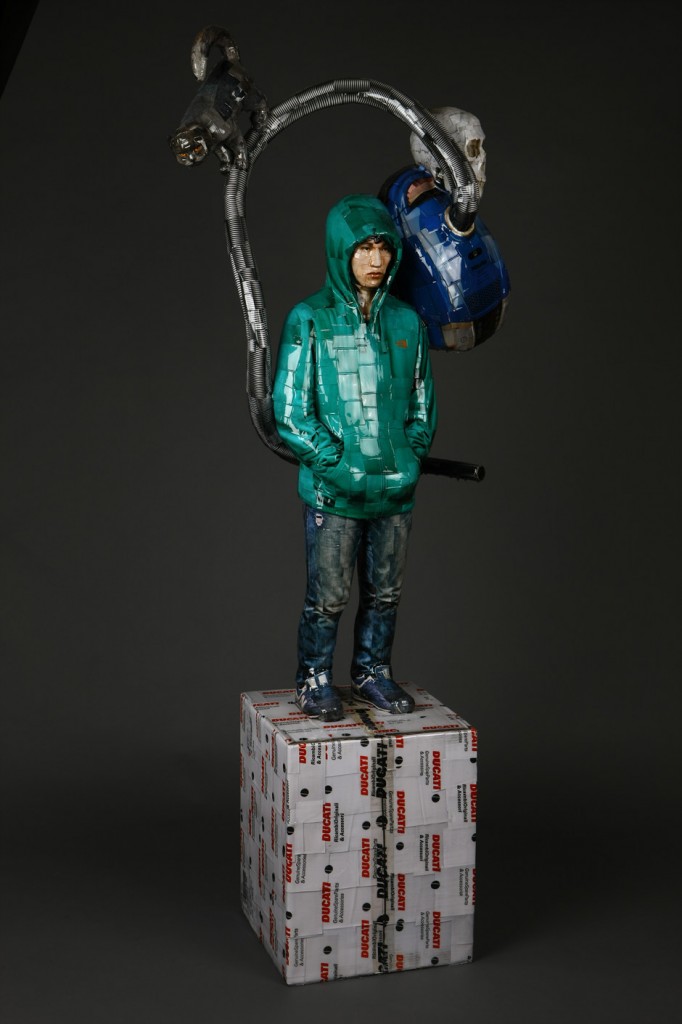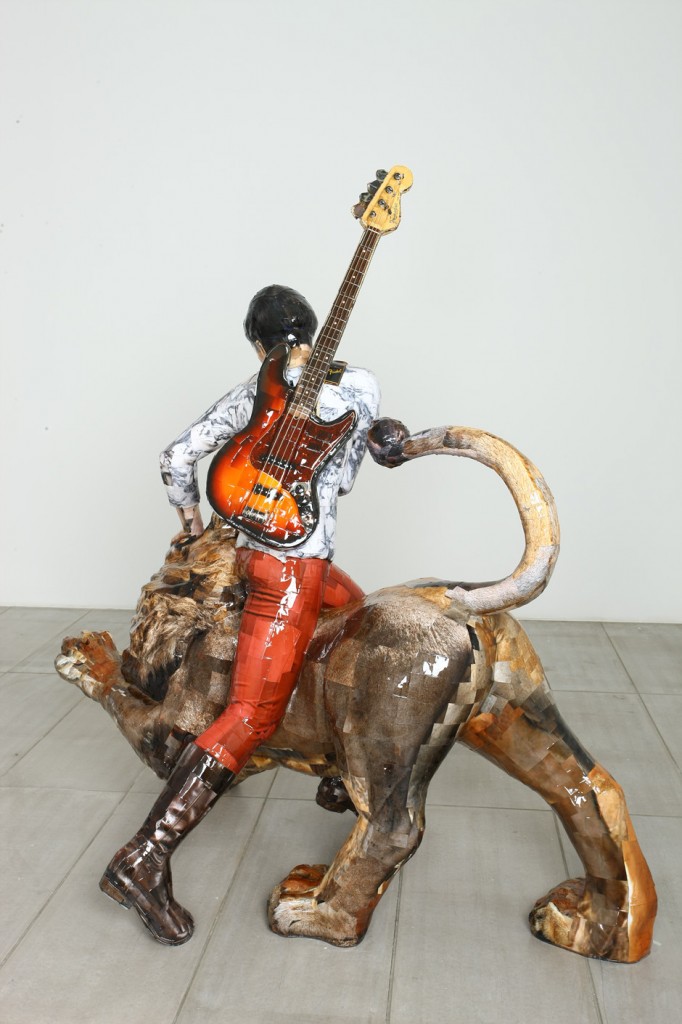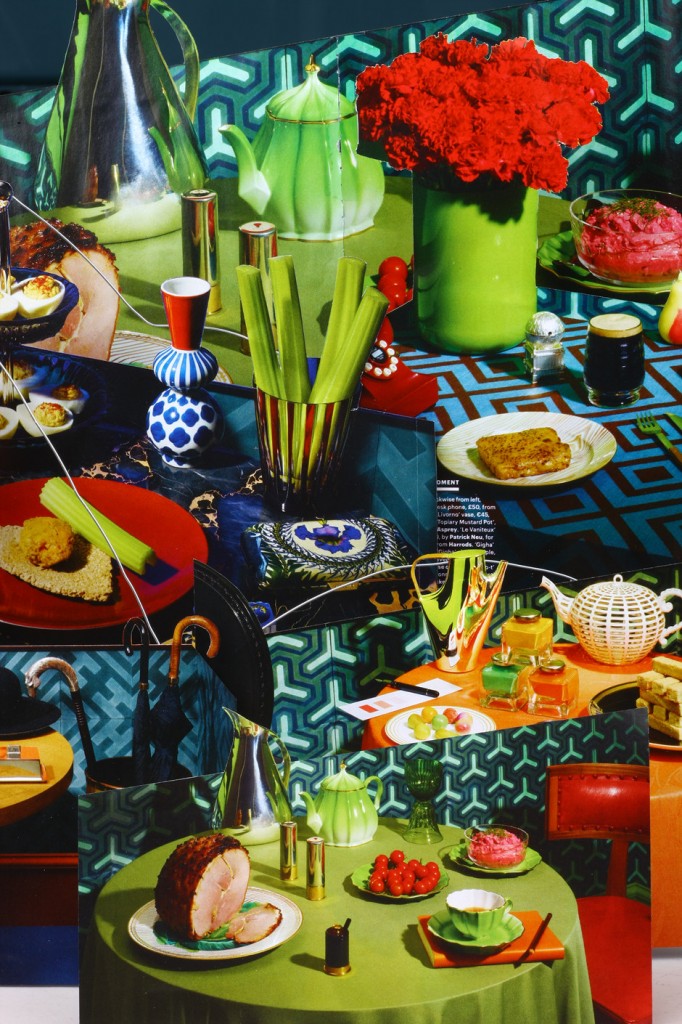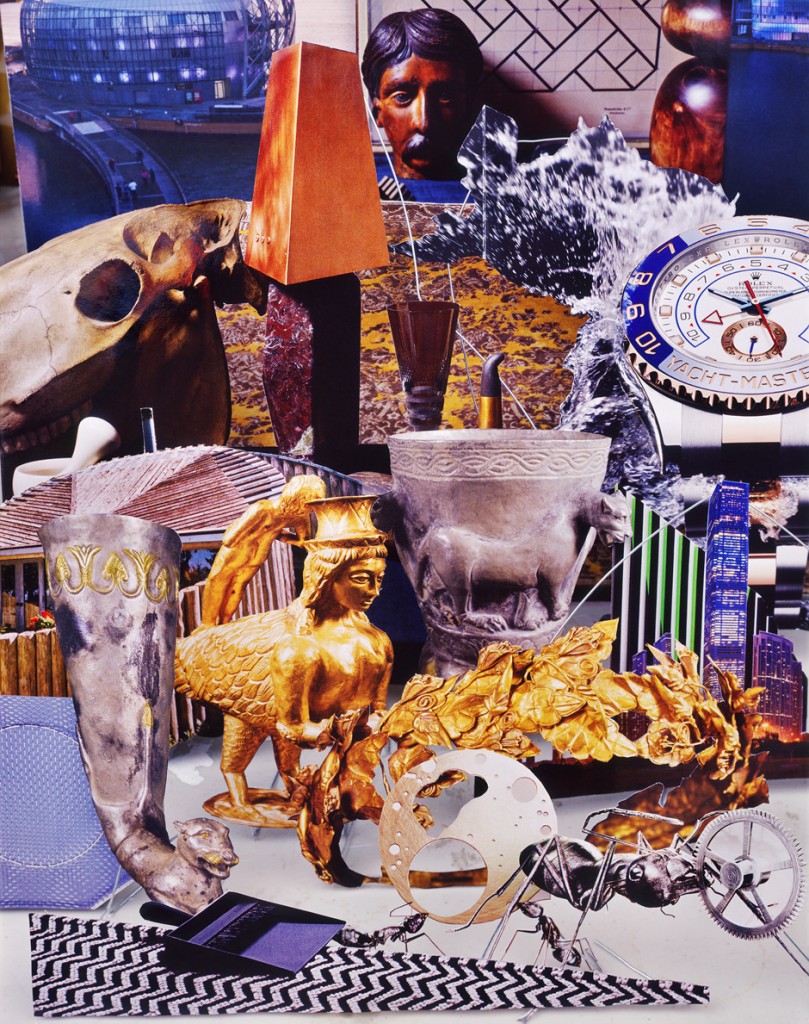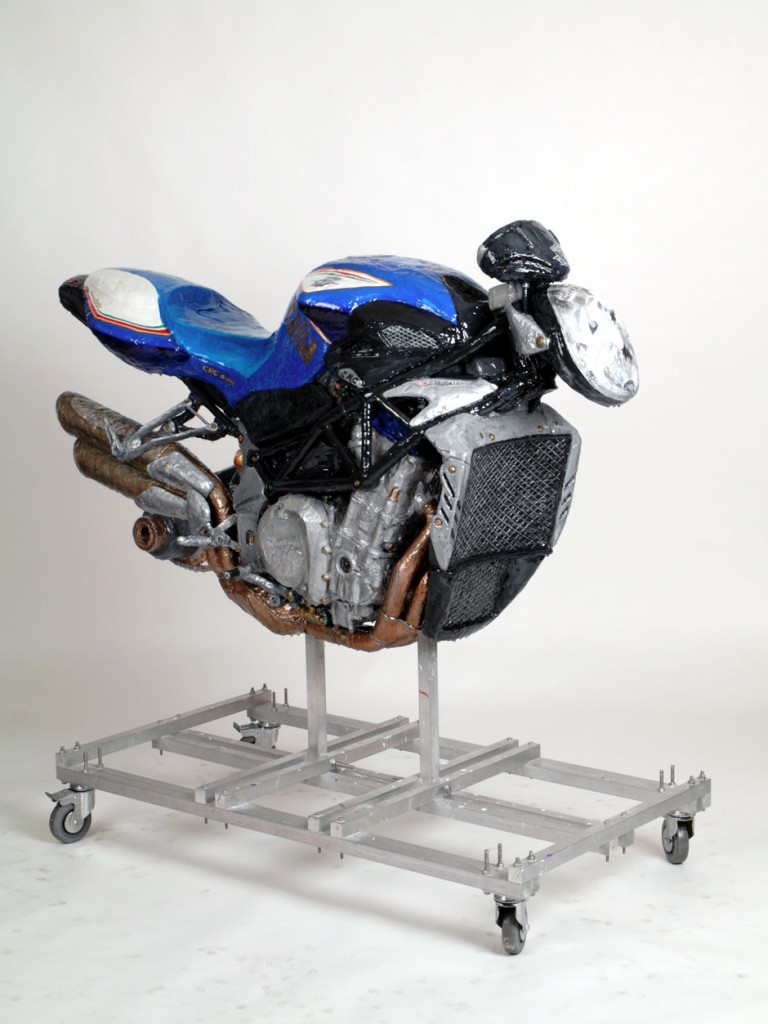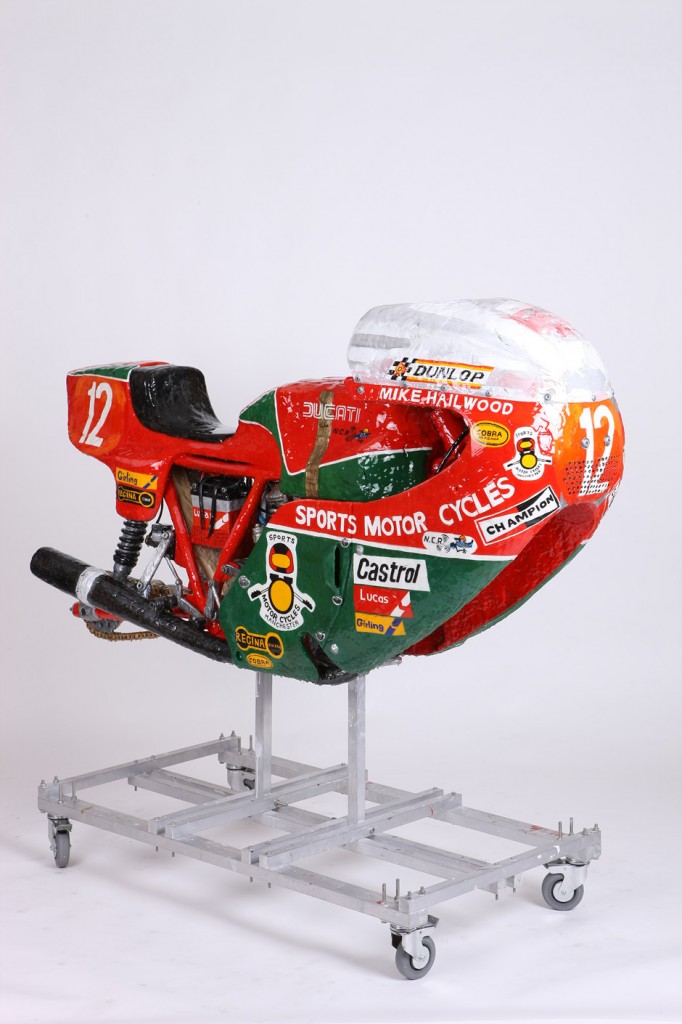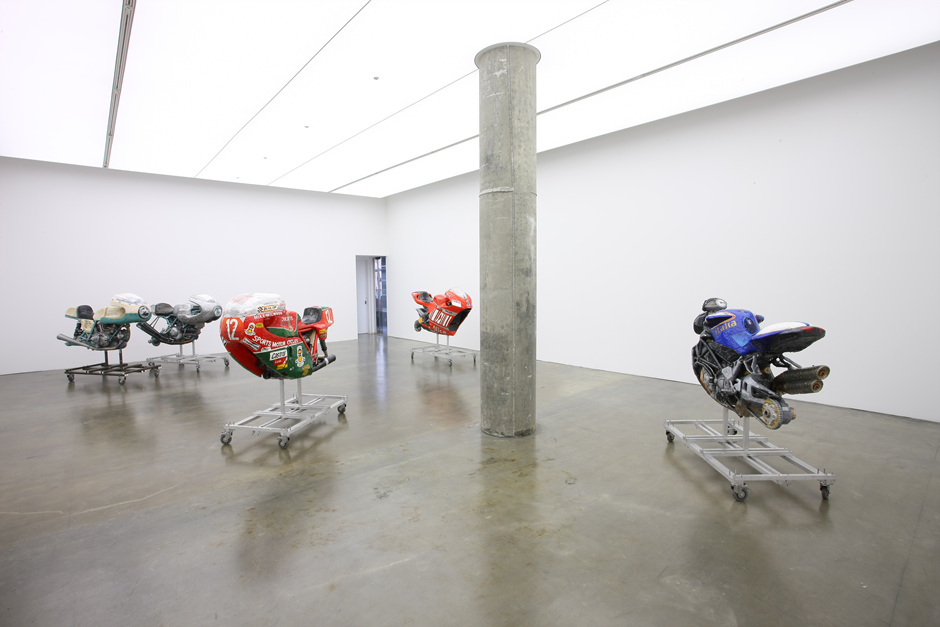INHALE is a cultural platform where artists are presented, where great projects are given credit and readers find inspiration. Think about Inhale as if it were a map: we can help you discover which are the must-see events all over the world, what is happening now in the artistic and cultural world as well as guide you through the latest designers’ products. Inhale interconnects domains that you are interested in, so that you will know all the events, places, galleries, studios that are a must-see. We have a 360 degree overview on art and culture and a passion to share.

Is it a sculpture, is it a photograph? Actually, it’s both. Osang Gwon decided a while ago that he liked photography as well as sculpture so he began mixing things up. He uses a technique named stitching, which makes it possible to assemble a number of individual digital images in order to form a new and larger image with no visible joins. Through this, he transfers two-dimensional images of objects or people into the three-dimensional space it originated from.
Gwon Osang is often called a rising star of the Asian art world. He has shown his work around the globe, done projects for Fendi and Nike, and collaborated on a record cover for the band Keane.
Gwon Osang’s work consists largely of Deodorant Type, The Flat, and The Sculpture series. Started in beginning of 1998, Deodorant Type is the oldest, most acclaimed of Gwon’s work. Deodorant in the title Deodorant Type is a product we all know and use, that alleviates human odor. Usually, instead of essentially eliminating the source of the odor, a deodorant lightly covers the unpleasant smell so that people cannot smell it. This in many ways has similarities with the attributes of Gwon’s photo-sculpture. While he captures the subject with the medium of photography, the captured image becomes mixed, creating something slightly different from the original subject.
Deodorant Type
The Flat
So how does a sculptor begin working with photo cut outs? Osang says that bronze, metal or wood are materials which for him are too large and heavy, so he kicked in his petite person imagination and eventually came up with the photo sculptures made out of paper, which are lighter and more mobile. In time, he began to use Styrofoam as a base for the imagery, I guess mostly because of those people that can’t keep their hands away in an art exhibition: “Whenever people touched the work it went in, and it was hard to pull back out. I glue the photos in place and use epoxy resin to varnish and seal the final work.” The models he most frequently uses for the photo-sculptures are friends or people from the art world, who have the time to pose for long periods of time, as he takes up to thousands of pictures per sculpture, the total time for the creation of these three-dimensional images being around 2 months.
For his ‘The Flat’ series Gwon cut out advertisement images such as watches, makeup and jewelry, attached supporting objects on the backs of those images so as to set them up as if they were still-life sculptures and photographed them. The Flat 16, 17, 18, which is made of three panels, is composed of the images of jewels taken from the 6-year copies of a Korean magazine entitled ‘Noblesse’. With this series he makes a full life circle for the objects: from 3-dimensional (product) to flat (image on the magazine), to 3-dimensional (sculpture) and again to flat (photograph).
The Sculpture series was the highlight of his solo exhibition in Seoul in 2010. Gwon focused on the contemporary industrial design such as high-end automobiles and motorbikes that exemplify the height of commercial society as pure artistic materials. All five works in the exhibition are portrayed in the shape of a torso with handles and wheels eliminated. Before Rodin introduced the concept of torso in the 19th century, it was seen as an unstable body, and the common convention was that it is difficult for the torso by itself to have any kind of aesthetic value. However, Rodin produced torsos in his conviction that the unstable form can activate the imagination much more than the completed form can.
The Sculpture
Gwon’s models are often depicted in unusual poses, which he says are mostly taken from ads and magazines. He is interested in exploring how the human figure can express different meanings in different contexts, through their gestures and expressions. His work is heavily influenced by contemporary advertisements, and a fascination with the way they reflect modern-day life.
Gwon Osang is based in Korea and represented by Arario Gallery, Korea. He has exhibited work in China, Denmark, France, Italy, Japan and The Netherlands.
by Alexandra Mateescu
Alexandra Mateescu is a photo-video junkie who left her imaginary super successful forensics career in favor of the University of Arts. She frequently gets mistaken with a 16 year old high school girl so you’ll never catch her without her ID, she has a strong passion for the 80’s, and her kind of art must be funny and a little bit ironic.



